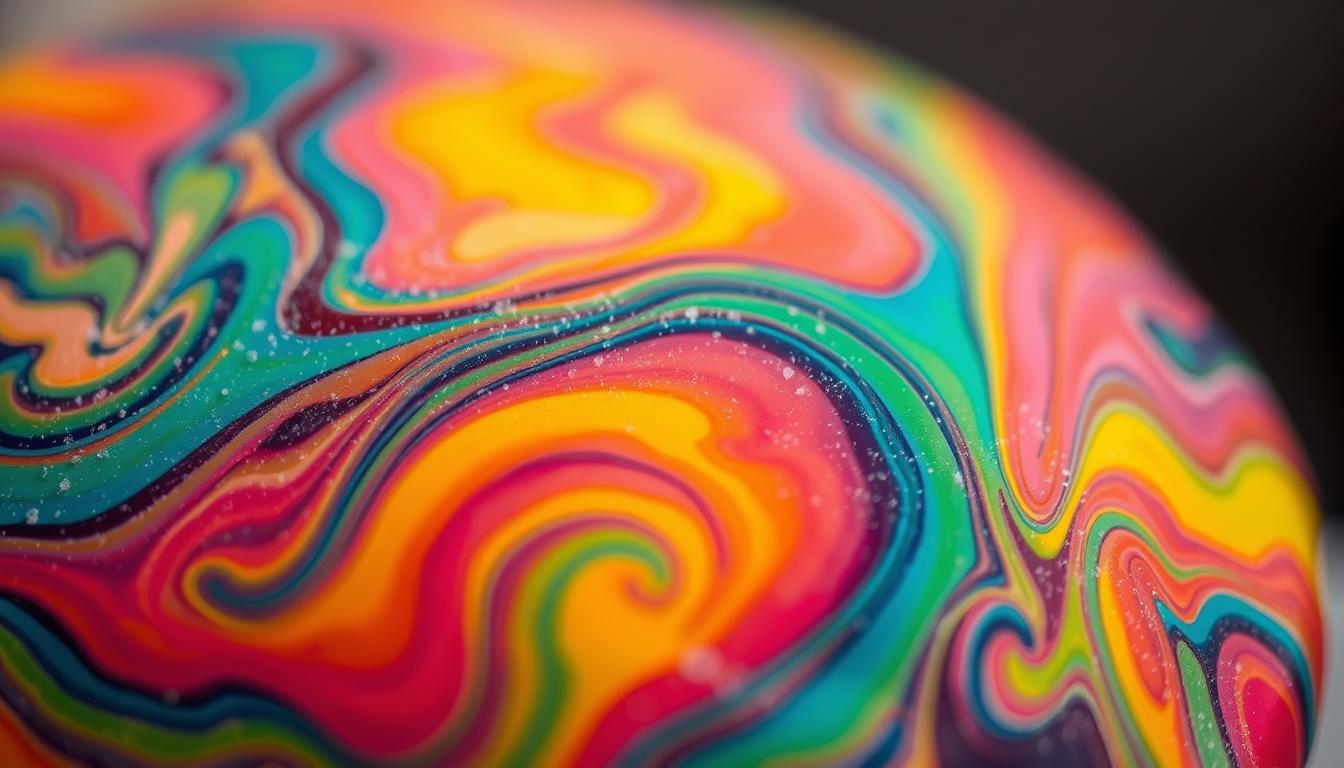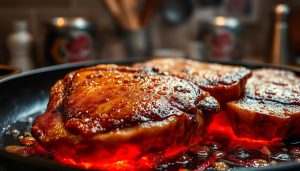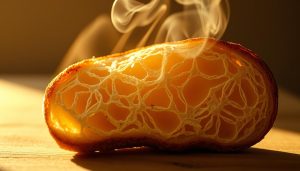In controlled studies, 50% of participants misidentified flavors when food coloring didn’t match expectations. This reveals how deeply vision shapes flavor perception – your brain starts interpreting meals before you take the first bite.
Neuroscience research shows visual details reach your cortex 150 milliseconds faster than taste signals. From childhood, we build mental links between hues and flavors – lemon yellow means tartness, deep red suggests sweetness. These connections become so automatic that mismatched colors create genuine confusion in taste tests.
The food industry uses this phenomenon strategically. Beverage companies spend millions testing packaging colors that make drinks appear sweeter or fresher. Even plate color affects how we perceive meals, with white dishes enhancing sweetness perception by 10% compared to black ones.
Key Takeaways
- Visual information reaches the brain faster than taste signals
- Color-flavor associations begin forming in early childhood
- Food appearance changes can reduce flavor recognition by 50%
- Industry professionals use color psychology to influence purchases
- Simple experiments demonstrate vision’s role in tasting
Understanding the Science Behind Food Perception
Your dining experience begins long before food touches your lips. Research confirms visual input creates flavor predictions that shape how you interpret meals. This process starts with biological wiring – your eyes send data to the brain 150 milliseconds faster than taste receptors transmit signals.

The Role of Visual Cues in Taste
Your brain uses appearance to prepare for incoming flavors. In one study, 73% of participants misidentified lime-flavored drinks as lemon when colored yellow. This occurs because neural pathways linking hues to tastes form during early childhood and strengthen with repetition.
How Color Shapes Flavor Expectations
Food companies use this science strategically. Yellow packaging often signals citrus flavors, while red suggests sweetness. When these visual hints mismatch actual tastes, your brain struggles to reconcile conflicting data – like purple grape juice tasting “wrong” if colored green.
| Factor | Visual Input | Taste Input |
|---|---|---|
| Speed | 0.15 seconds | 0.30 seconds |
| Brain Region | Visual Cortex | Gustatory Cortex |
| Influence on Perception | Creates expectations | Confirms/rejects predictions |
| Childhood Development | Color-flavor links form by age 3 | Basic taste recognition by age 2 |
The Interaction of Taste Buds and the Brain
While your tongue detects basic tastes, the brain combines this data with visual memories. This explains why white chocolate in dark packaging often gets described as “bitter” – your eyes override actual flavor signals from taste buds.
Color and Taste: Can Your Eyes Trick You? – Experiment Setup
Reveal how appearance alters flavor perception through a simple kitchen experiment. This hands-on activity demonstrates how food coloring manipulates taste expectations using identical beverages.

Gathering Materials and Preparing the Test
Assemble these items:
- Large bottle of apple juice
- Red, blue, and green food coloring
- Nine clear cups labeled A-C in three sets
- Timer and water for palate cleansing
Pour identical quarter-cup portions into each cup. Add two drops of different coloring to each set – red in group 1, blue in group 2, green in group 3. Keep volunteers unaware of modifications to ensure unbiased results.
Step-by-Step Procedure for the Tasting Activity
Instruct participants to:
- Taste each colored drink within two minutes
- Rinse with water between samples
- Rank preferences from most to least enjoyable
Repeat with multiple volunteers to identify patterns. Record responses systematically – many report sweeter perceptions with red hues despite identical apple juice bases. This setup isolates color’s impact by eliminating other variables like texture or aroma.
Enhancing Food Appeal Through Color and Presentation
What you see directly shapes what you taste – a truth food manufacturers exploit daily. The 1970s blue steak experiment proved this dramatically. Volunteers ate normally colored meat and fries under special lighting, only to feel nauseous when seeing the actual blue and green hues.
Practical Examples from Everyday Foods
Grocery shelves showcase strategic color use. Farm-raised salmon gets dyed pink because consumers associate gray flesh with spoilage. Apples with enhanced red skin appear sweeter before biting – a trick boosting sales by 23% in taste tests.
“My brain rejected the meal instantly when the lights changed. I couldn’t swallow another bite.”
The Impact of Color Additives in Consumer Perception
Manufacturers use additives for three key reasons:
| Food | Natural Color | Added Color | Effect |
|---|---|---|---|
| Salmon | Gray | Pink | Freshness perception +67% |
| Apple Skin | Pale Red | Deep Red | Sweetness expectation +41% |
| Jelly Beans | Clear | Vivid Hues | Flavor recognition 92% faster |
Even simple foods like french fries use golden-brown coloring to signal crispness. Kids’ snacks like pudding and juice drinks employ bright colors to boost appeal. These tactics work because your brain prioritizes visual data over other senses when evaluating meals.
Conclusion
Visual cues shape flavor experiences more powerfully than most realize. Your brain processes sight 150 milliseconds faster than taste signals, creating expectations that alter actual perception. This explains why 73% of participants in studies misidentify flavors when appearance contradicts reality.
Food manufacturers leverage this science strategically. From dyed salmon to vivid jelly beans, visual enhancements boost appeal and sales. Simple kitchen experiments with colored drinks prove even conscious awareness can’t fully override these ingrained associations.
The effect spans generations. Children develop color-flavor links by age three, while adults subconsciously judge meals through plate colors and packaging hues. Practical tests using apple juice or french fries demonstrate how easily expectations override taste bud signals.
Understanding this sight-flavor connection offers valuable insights. It reveals why mismatched appearances trigger rejection, and how marketers exploit visual psychology. Your next meal begins with eyes, not taste buds – a truth reshaping both food science and everyday dining choices.



